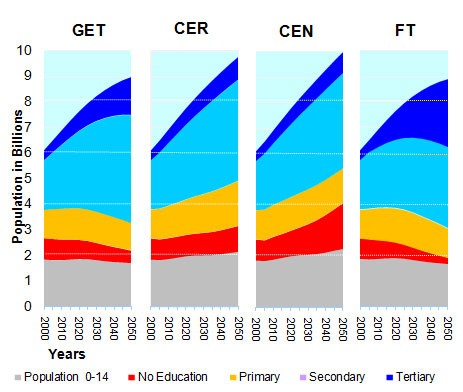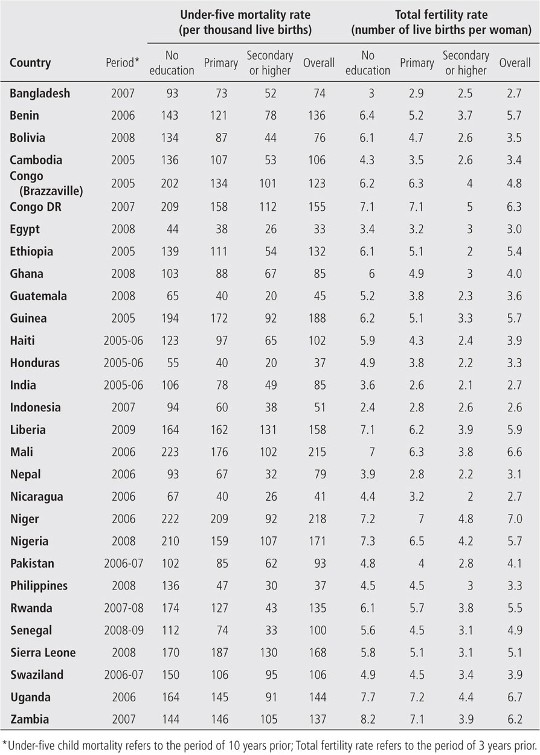Education, population growth, and human well-being
Projections of future population trends that do not explicitly include education in their analysis may be flawed, according to research published in the 29 July 2011 issue of the journal Science.
The study uses the “multi-state” population modeling approach to incorporate education attainment level, along with age and sex. The integration of education into the analyses adds a “human quality” dimension to projections of fertility, mortality, and migration. As education also affects health, economic growth, and democracy, these projections provide a more comprehensive picture of where, how, and under what conditions human well-being is increasing.
The research reinforces earlier findings that the level of formal education achieved by women is, in most cases, the single most important determinant of population growth. More educated women generally have fewer children, better general health, and higher infant survival rates. Education also appears to be a more important determinant of child survival than household income and wealth. The study also found that if concerted efforts were made to fast track education, the global population could remain below 9 billion by 2050. Thus the global population outlook depends greatly on further progress in education.

Researchers Wolfgang Lutz and Samir K.C. of the Wittgenstein Centre for Demography and Global Human Capital evaluated the effect of education on population growth to 2050 using four alternative education scenarios.* The scenarios are based on identical sets of education-specific fertility, mortality, and migration rates. They differ only in terms of their assumptions about future school enrolment rates.
“The most ambitious, or ‘fast track’ (FT) scenario assumes all countries expand their school system at the fastest possible rate—this is comparable with past, best performing countries, Singapore and South Korea, says co-author Samir K.C..“The most pessimistic scenario of ‘constant enrollment numbers’ (CEN), assumes no new schools are built and the number of people attending schools remains constant, which, under conditions of population growth, means declining enrolment rates.”
“Under these two extreme scenarios, population size in 2050 could vary by as much as 1 billion–with 8.8 billion people expected under the fast track scenario and as many as 9.9 billion under the constant enrolment numbers scenario, as can be seen in figure 1. The effect is greatest in countries with current high fertility rates and high education differentials,” he stated.

Kenya’s population, as an example, would increase from 31 million in 2000, to 85 million in 2050, under the optimistic FT scenario. Under the pessimistic CEN scenario with no new schools, Kenya’s population could increase to 114 million. The difference of 30 million between these extremes is equivalent to the size of Kenya’s population in 2000. As the scenarios only consider the individual-level effects, not the broader community-level impacts that education can have such as better availability of reproductive health services, the results are likely to be an underestimate of potential population change.
The authors emphasize that the effect of better education on population growth may not be obvious for some time. This is because the effect on fertility of girls entering school now may not be evident for about 15 years, when they enter their prime child bearing years.
The study supports earlier findings by IIASA and the VID regarding the level of educational attainment needed to bring about changes in fertility, with secondary education bringing greater reductions in fertility than primary education alone.
The study supports earlier findings by IIASA and the VID regarding the level of educational attainment needed to bring about changes in fertility, with secondary education bringing greater reductions in fertility than primary education alone.
The research highlights the strong link between economic growth and ‘human capital’ – the combination of health status and the education levels achieved by adults. Better education affects many aspects of human development, including health, economic growth, and democracy.

More Information



